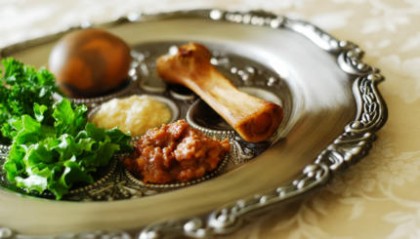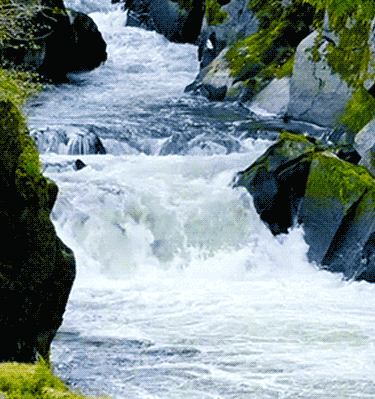Spring Passover Moon
Under the full passover moon Kate and I drove over to Mt. Vernon Country Club for a community seder. There were about 60 people there, sitting in groups of 8 around circular tables. The dining room looked out to the south and east. As the sun set, the lights of Denver began to sparkle around Table Mesa in the distance.

The tables had platters of oblong chunks of gefilte fish, a bowl of haroset (a sweet mixture that symbolizes the mortar used by Hebrew slaves in Egypt), a small bowl of pink grated horseradish, a stack of matzo covered in a linen napkin, and a seder plate with the traditional passover items: lamb shank, boiled egg seared over a flame, parsley, haroset and maror (horseradish). And an orange. The orange is a recent addition to the passover plate-at least for Reconstructionists-and it symbolizes the fruitfulness of women’s contributions in Jewish history and in the present.
The haggadah, the telling of the story, contains all the prayers, readings, songs and explanations for the evening. The seder (order) of the passover celebration has 15 steps, symbolizing the 15 steps that led up to the Temple in Jerusalem. The Temple passover celebration had two priest on each of the fifteen steps and they sang the passover ritual as worshippers brought up their lamb for sacrifice.
The evening followed this ancient ritual, commemorated in Christian churches as the last supper and ritualized among them as communion or the eucharist.

As Kate and I got out of the car at Mt Vernon, a young woman asked, “Is this the place for the seder?” It was, I said. Her name was Leah. We walked in together, past the slightly ridiculous pretension of the lobby, its fireplace and the sitting room with the observation deck like windows. Down a set of stairs was a lower level under the sitting room.
We chatted casually with Leah. The room was almost empty then, not many had come. We were early. I went out on the big deck that overlooked Table Mesa and Leah followed. She knew Rabbi Jamie in the synagogue he served previously in Buffalo, New York.
“I’m bi-polar and I went on a road trip, trying to find someplace new. I went to Florida, drove all over and came this way but decided I couldn’t cross the mountains in the winter, so I ended up working in Boulder.”
Oh. I have bipolar illness in my family. Two aunts hospitalized, one died in the state hospital, another came out, but under heavy medication. “Oh. That’s good. Well, I mean it’s not good that you have bipolar in the family, but it’s good you understand.”
And I do. It was as if this ancient ritual, one that gathers the tribe across the world to honor its release from bondage, had found a member of that tribe who also belonged to mine. Leah sat next to me and we dipped our little fingers in the wine, the parsley in the salty water, the tears of those in bondage, ate our matzo with haroset and made our Hillel sandwiches, haroset and maror between two slices of matzo.

The ways the universe conspires with us: it lets us paddle along the river of time for a bit, then puts us through some rapids, lets us drift into a clear pool, but always moves us forward through the Grand Canyon of our life, and sometimes helps us to land on shore for awhile, perhaps in a spot that looks familiar, yet is always new. At 70 the river which carries me is much closer to the Gulf of All Souls than it was in my twenties, but unlike then, I can see through the translucent canyon walls to the canoes of my friends, family and new acquaintances.
There are even moments, like an April passover meal in the Rocky Mountains, when we come together on the strand of our common journey, our lives and our rivers joined for a moment. We travel apart but we are not alone.
